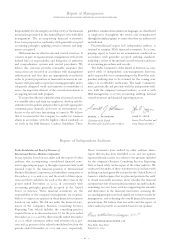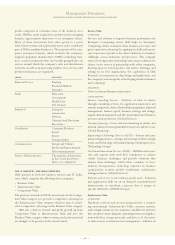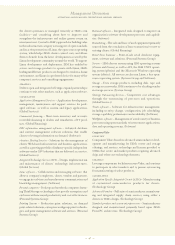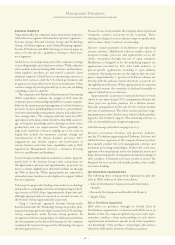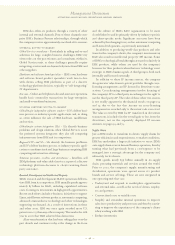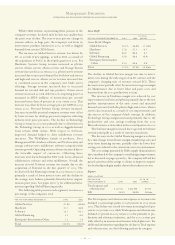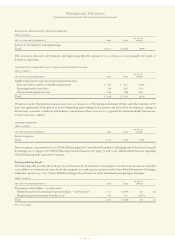IBM 2003 Annual Report Download - page 48
Download and view the complete annual report
Please find page 48 of the 2003 IBM annual report below. You can navigate through the pages in the report by either clicking on the pages listed below, or by using the keyword search tool below to find specific information within the annual report.
profits compared to consumer areas of the industry. As a
result, IBM has made acquisitions and invested in emerging
business opportunities important to its enterprise clients.
Many of these investments have since grown to a point
where their revenue and opportunity now can be considered
part of IBM’s mainline businesses. The majority of the com-
pany’s enterprise business, which excludes the company’s
original equipment manufacturer (OEM) technology busi-
ness, occurs in industries that are broadly grouped into six
sectors around which the company’s sales and distribution
activities, as well as an increasing number of its services and
products businesses are organized:
SECTOR INDUSTRIES
Financial Services Banking
Financial Markets
Insurance
Public Education
Government
Health Care
Life Sciences
Industrial Aerospace
Automotive
Defense
Chemical and Petroleum
Electronics
Distribution Consumer Products
Retail
Tr a vel
Transportation
Communications Energy and Utilities
Media and Entertainment
Telecommunications
Small & Medium Business The majority of businesses
in this sector have fewer
than 1,000 employees
THE IT INDUSTRY AND IBM’S STRATEGY
IBM operates in both the business services and IT indus-
tries, which comprise the following three categories:
•Business Value
•Infrastructure Value
•Component Value
The primary rationale for IBM’s investments in the Compo-
nent Value category is to provide a competitive advantage in
the Infrastructure Value category, which in turn is consid-
ered a competitive advantage in the Business Value category.
IBM sees a shift in revenue and profit growth up from
Component Value to Infrastructure Value and into the
Business Value category, where revenue and profit potential
are thought to be greatest in the decade ahead.
Business Value
overview
Services and software to improve business performance for
Enterprise Computing clients. IBM helps its Enterprise
Computing clients transform their business processes and
gain competitive advantage by applying its skills and experi-
ence to processes specific to the client’s industry or to business
challenges across industries and processes. The company
enters into long-term relationships and creates solutions for
clients, on its own or in partnership with other companies,
drawing upon its broad product and service offerings, and
relying on its BCS organization, the capabilities of IBM
Research, its experience in chip design and application, and
the company’s own viewpoint of developing trends in business
and technology.
strategy
Drive on demand business innovation.
capabilities
Business Consulting Services – Delivery of value to clients
through consulting services for application innovation and
systems integration, client relationship management, financial
management, human capital, business strategy and change,
supply chain management and the transformation of business
processes and operations. (Global Services)
Customer financing – Lease and loan financing to clients and
internal clients for terms generally between two and five years.
(Global Financing)
Engineering & Technology Services (E&TS) – System and com-
ponent design services, strategic outsourcing of clients’ design
teams, and technology and manufacturing consulting services.
(Technology Group)
On Demand Innovation Services (ODIS) – IBM Research scien-
tists and experts work with BCS consultants to analyze
clients’ business challenges and provide solutions that
address these challenges. ODIS offers a number of cross-
industry micropractices with deep expertise in business
optimization, security, mobile enablement, information
mining and more. (Global Services)
Software and services to meet industry-specific needs – Solutions
and applications built on an on demand, standards-based
infrastructure to transform a process that is unique to
specific industries. (All IBM Groups)
Infrastructure Value
overview
Hardware, software and services integrated into a comput-
ing environment. Infrastructure Value concerns systems,
such as high-volume server computers; middleware software
that can interconnect disparate operating systems and applica-
tions with data; storage networks; and devices. It also refers
to such services as infrastructure management—whether on
Management Discussion
INTERNATIONAL BUSINESS MACHINES CORPORATION AND SUBSIDIARY COMPANIES
46








